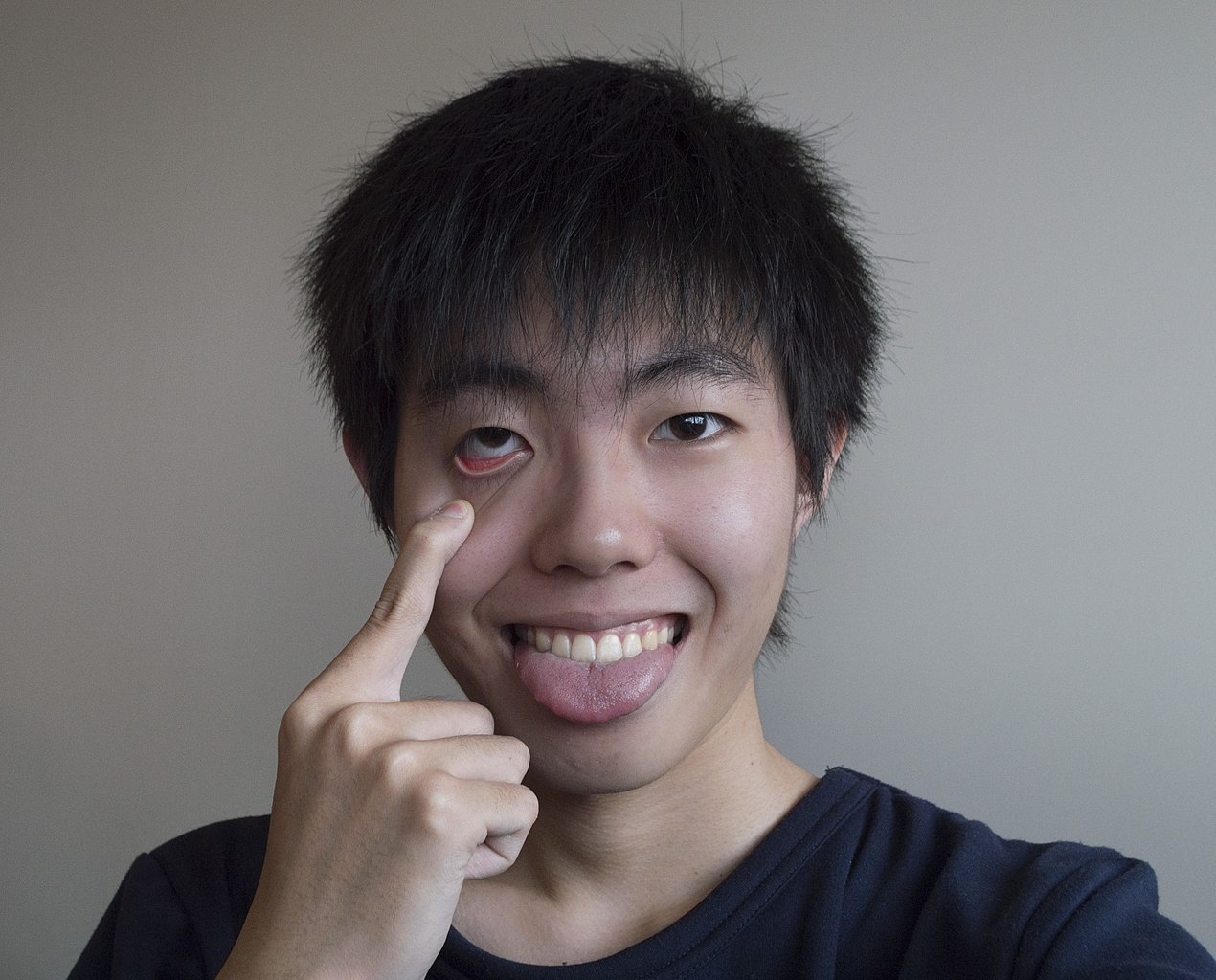The akanbe, akanbee, or akkanbee is a way to show disdain by pulling down the lower eyelid and sticking out the tongue toward the target. These days, akanbe usually just entails showing one’s tongue to another person and is sometimes misunderstood to mean just the act of showing your tongue. One of the most famous akanbe-ish expressions is from Albert Einstein, when he stuck out his tongue for the media.
Meaning of Akanbe

In Katai Tayama’s Inaka Kyōshi (“Country Teacher”), the facial gesture is mentioned in the sentence “some male students look back and show their red eyes.” The “red eyes” or 赤い目 reads as “Akaime” and with an accent the M consonant can be easily replaced by the B consonant. So, that could be how the term originated in the first place. And the literal meaning of akanbe could be “red eyes.”
In its original context, akanbe meant to expose the red part at the back of the lower eyelids, hence the original word akaime or “red eyes.” However, some people today take the part “bee” in Akanbe or Akanbee as a newborn term for “tongue” and use it as a synonym for sticking one’s tongue out like a spoiled child.
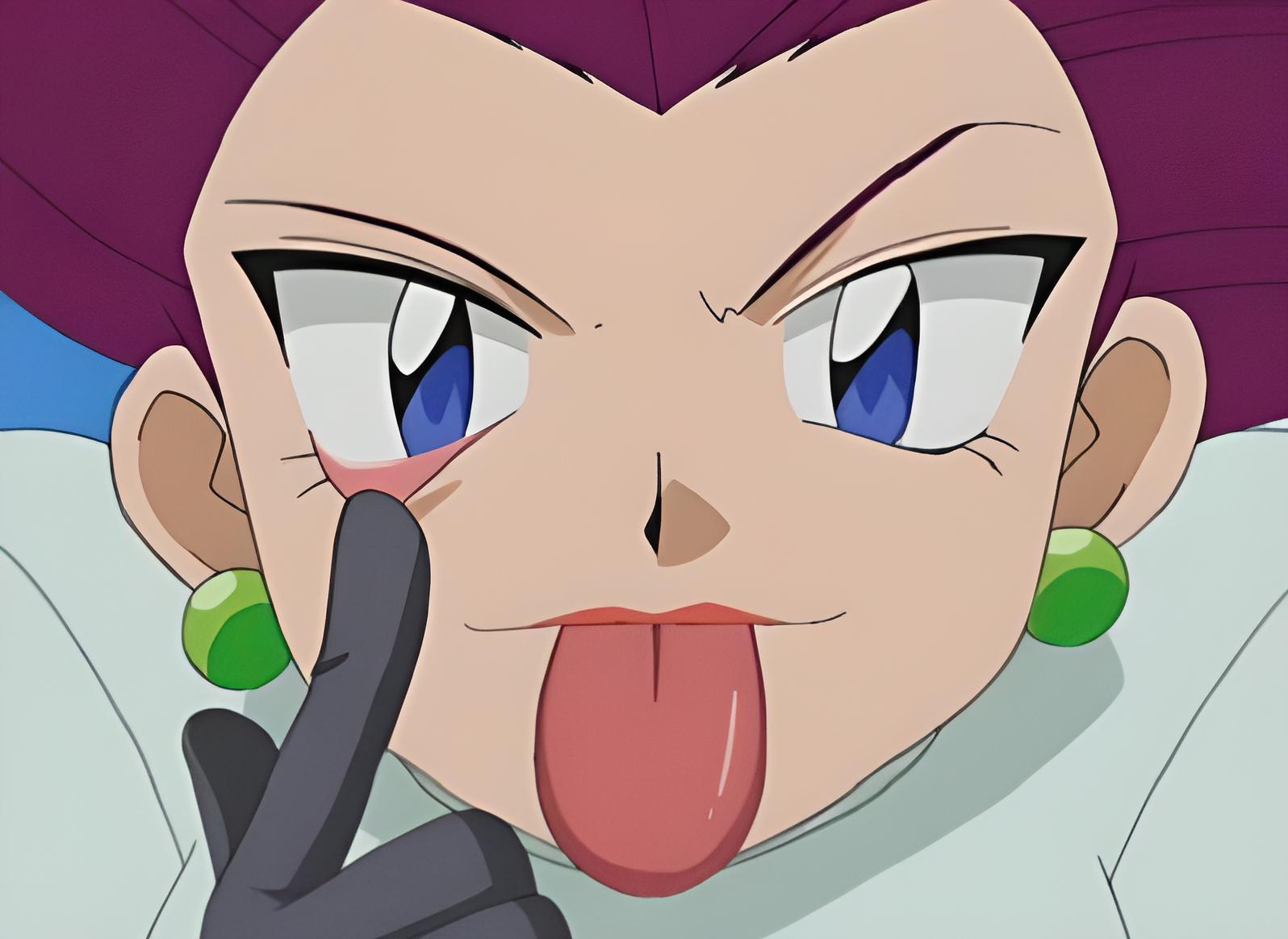
In addition to being an insult, sticking one’s tongue out briefly can also be a way to cover up shame. Although akanbe is frequently used in Japan, it still has a childlike quality.
Origin of Akanbe
The earliest known use of akanbe is as an “ochi” (punch line). This ochi is part of an Edo era (1603–1868) rakugo (a Japanese sit-down comedy) story named “Konnyaku mondou” (蒟蒻問答). In the story, the owner of a konnyaku (yam cake) store does an akanbe at a monastery. And the austere monks mistake the gesture for a holy Buddha saying and pay homage to him. The Buddhist concept of the “third eye,” also known as the “wise eye,” might be at the root of this misunderstanding.
Akanbe is also called bekako or bekkanko in the Kansai dialect. And in Natsume Sōseki’s 1906 novel Botchan, there’s a statement that goes something like “I showed it by doing bekkanko [akanbe] with my index finger.”
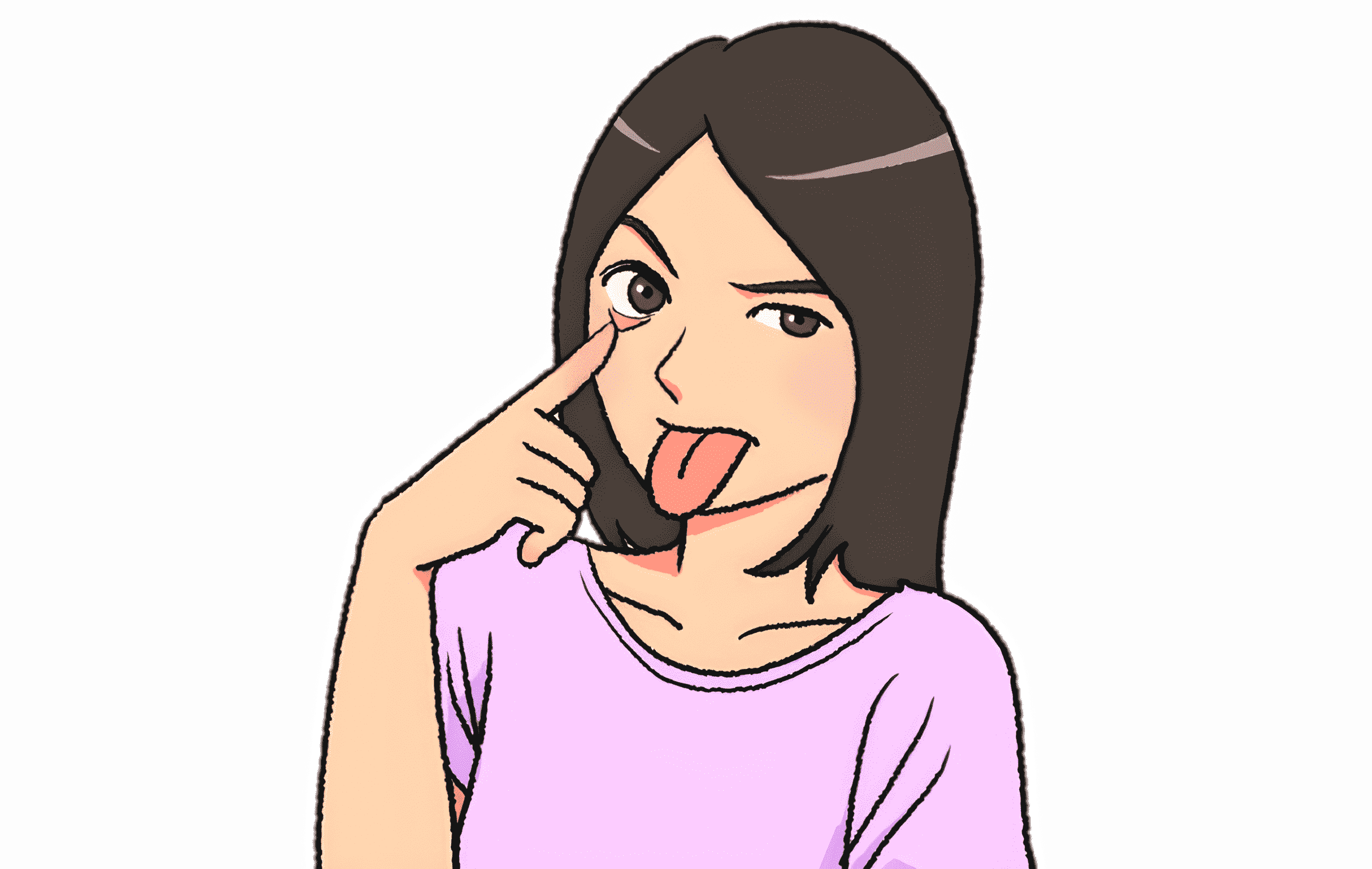
Akanbe in Other Countries
Koreans
In Korean, akanbe is called 메롱 (mae ron). And by sticking out the tongue while making a prolonged vocalization of “mae” or “me”, the Koreans express the gesture in the same way as the Japanese (tongue out with “bee” in Japanese).
Tibetans

Tibetans stick their tongues out in the same way as in akanbe. This time, however, the gesture is employed as a respectful salutation.
The gesture of extending one’s tongue is used both as a welcome and as a sign of respect in traditional Tibetan society. Tibetan legend attributes this practice to a ruthless king who reigned in the 9th century and was rumored to have a dark tongue. People began thrusting their lips out as an indication that they were different from this tyrannical king and did not want to be confused with him.
In the Rest of the World
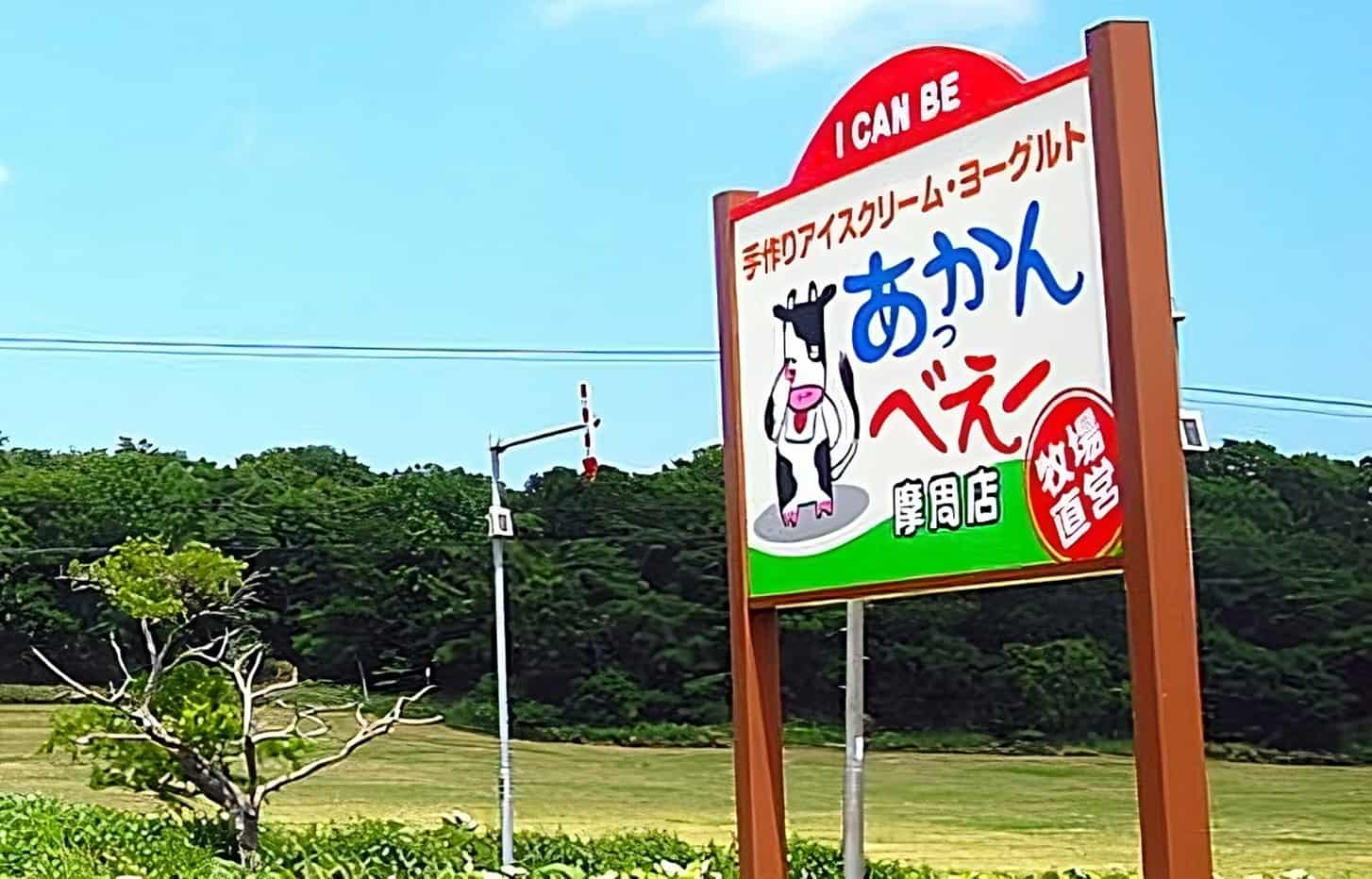
The facial expression is widely used in other parts of the world. And most of the users are actually unaware of this. Just like in Europe and the Americas, the akanbe is used most often with the emoticon “:-P” ( 😛 ) or “:P” in the rest of the world. It is a left-side-up face where the colon (:) is the eyes, the hyphen (-) is the nose, and the letter P is the mouth with its tongue sticking out.
Akanbe in Comics
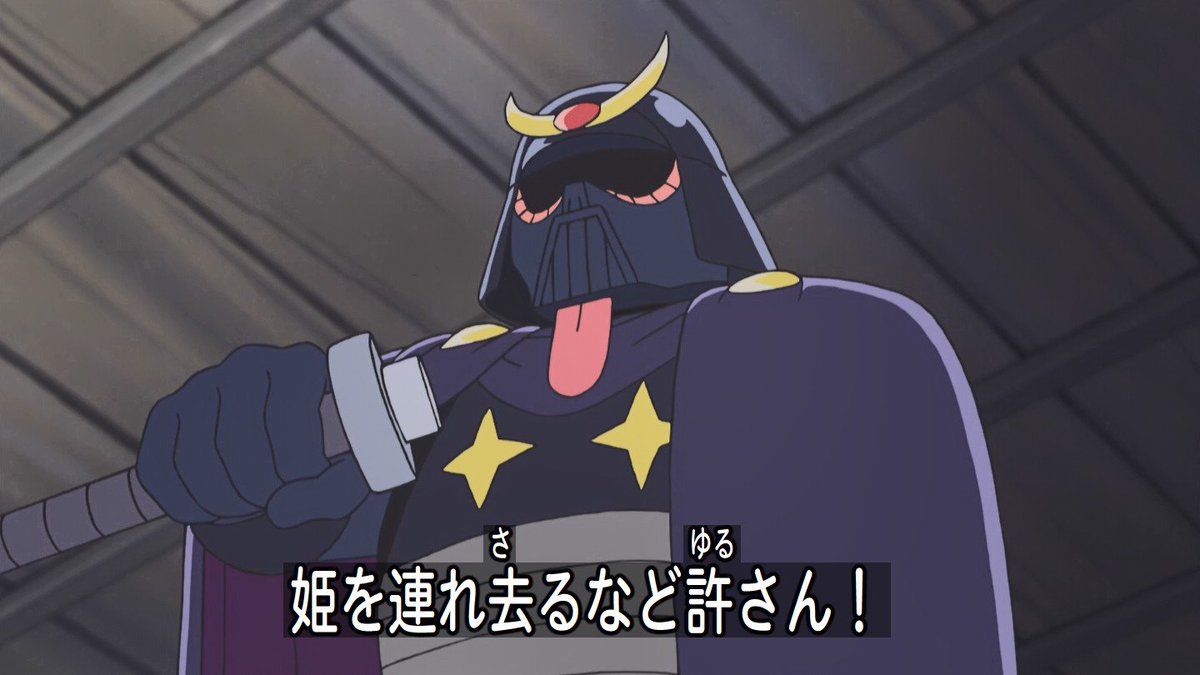
In the children’s science fiction manga “Doraemon,” and “Crayon Shin-chan”, a character called “Acambeder” (アカンベーダー) appeared as a parody of Darth Vader.
Miscellaneous Facts About Akanbe

- In 1951, Albert Einstein did a similar gesture for his pictures taken for the media.
- Bekataro, a character from Japanese folklore, is known for his akanbe gesture.
- A female southern elephant seal named “Maruko,” who was kept at the ISE Sea Paradise (formerly Futami Sea Paradise) aquarium was able to perform the art of akanbe. She stayed in the aquarium from 1989 to 2013 for 24 years, which is a world record for the species.
- In the “Jungle Kurobee” animated series when the protagonist uses magic, he poses akanbe with the shout of “Uraurabekkangko.” There is also a character named aka-bee in the series.
- In the sci-fi anime TV series “Yatterman,” the character “Dokurobei” appears in the show with an akanbe expression.


